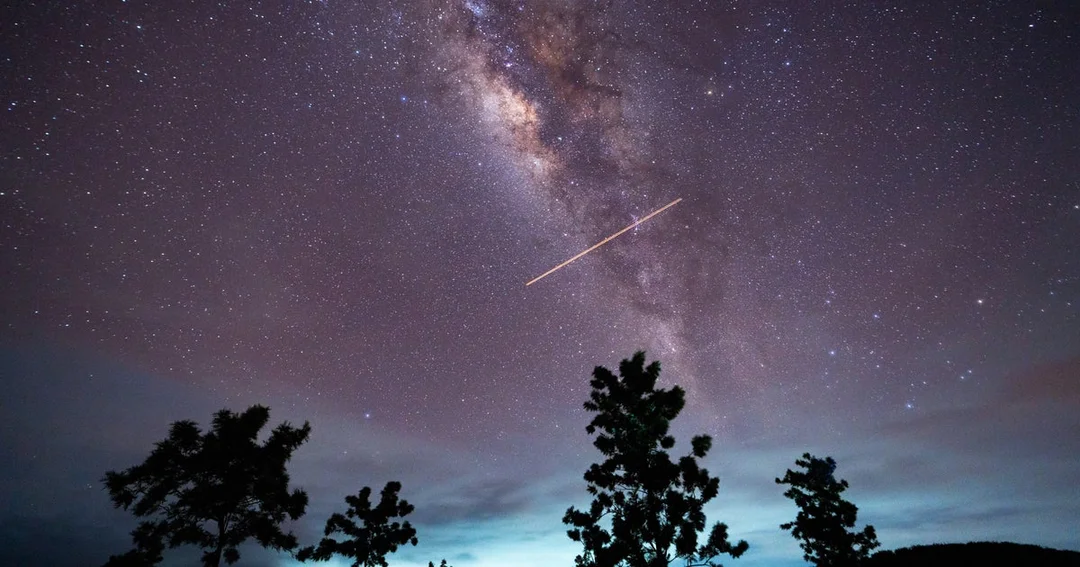
Catch the Celestial Show: Eta Aquarids Meteor Shower Peaks, Courtesy of Halley’s Comet
Prepare to witness a breathtaking celestial event! The Eta Aquarids meteor shower, a dazzling display of shooting stars born from the debris of Halley's Comet, is currently peaking. This annual spectacle offers a unique opportunity to connect with cosmic wonders, and there's still time to catch the show!
While the peak occurred in the early hours of May 6th, the Eta Aquarids will remain visible until May 21st. This meteor shower is a result of Earth passing through the debris trail left by Halley's Comet, a periodic comet that visits our solar system approximately every 75 years.
As tiny particles from Halley's Comet enter Earth's atmosphere, they burn up, creating the mesmerizing streaks of light we know as meteors. The Eta Aquarids are renowned for their fast-moving nature, and under optimal conditions, observers can expect to see 10 to 15 meteors per hour, particularly just before dawn.

Best Viewing Tips:
- Time: The early hours before dawn offer the darkest skies and best visibility.
- Location: Escape the glare of city lights. Find a spot away from urban areas for a clearer view.
- Equipment: No telescopes or binoculars needed! Your naked eye is the best tool for capturing the wide expanse of the meteor shower.
- Comfort: Dress warmly, even in summer, and bring a blanket or chair for comfortable stargazing.
According to NASA, the meteor shower will be viewable in both Northern and Southern Hemispheres, but conditions are more favorable in the Southern Hemisphere.
Understanding Meteor Showers:
Meteor showers occur when Earth passes through trails of debris left by comets or asteroids. These particles, often no larger than grains of sand, create bright streaks as they burn up in our atmosphere.
The Eta Aquarids stand out due to their speed, hurtling through space at approximately 40 miles per second. In the Northern Hemisphere, they are frequently observed as “earthgrazers,” long meteors that appear to skim along the horizon.

While Halley's Comet itself won't grace our skies again until 2061, the Eta Aquarids offer a stunning reminder of its cosmic presence. So, grab a blanket, find a dark spot, and prepare to be amazed by this celestial spectacle!
Did you catch the Eta Aquarids? Share your viewing experiences and favorite meteor shower moments in the comments below!
Related issues news
How to view the meteor shower tonight?
For best viewing, NASA advises spectators to lie flat on their back in a region away from light pollution. Meteors should be visible after about 30 minutes, when eyes adjust to the dark.
When is the ETA Aquarid meteor shower?
The Eta Aquarid showers are visible around the globe and occur between mid-April and late May. Stargazers can expect to see 10 to 15 meteors per hour.
When is the Halley's comet meteor shower?
The meteor shower peaks each year in early May as the Earth passes through remnants of Halley's Comet. NASA says the Earth passes through the comet's debris trail twice each year, leading to two different yearly meteor showers. The showers happen in May, the Eta Aquarids, and again in October, as the Orionids.
What is Halley's comet meteor shower?
Eta Aquarid meteors in the Northern Hemisphere are often earthgrazers — long meteors that appear to skim the surface of the Earth at the horizon, according to NASA. Meteors in the Eta Aquariids come from space debris that originated from Halley's comet.